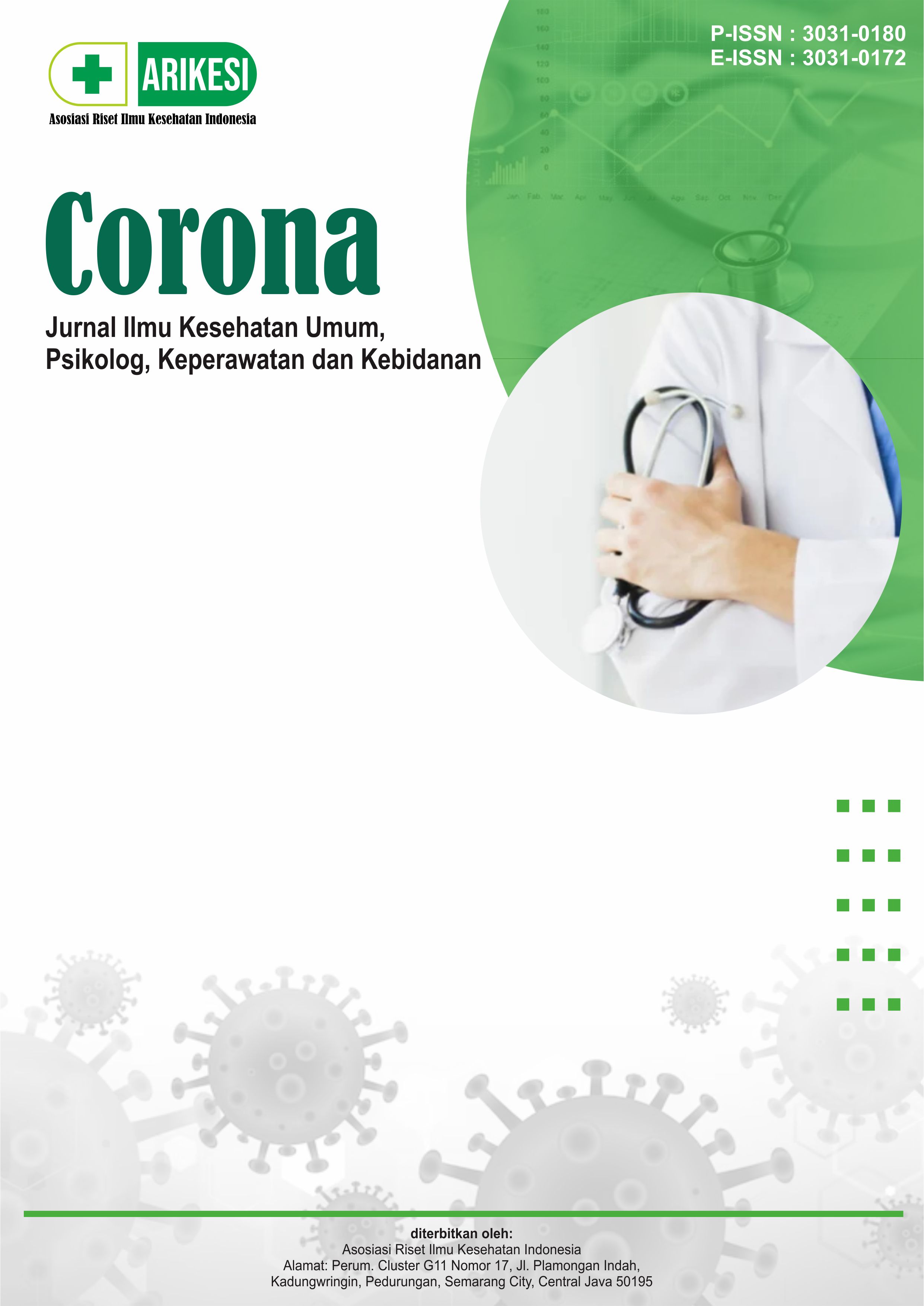Teknik Menghindari Kerusakan Zat Aktif Akibat Paparan Suhu dan Kelembapan
DOI:
https://doi.org/10.61132/corona.v3i1.1104Keywords:
Thermal degradation, hydrolysis, damage to active substances, humidity and high temperaturesAbstract
Deterioration of active ingredients due to exposure to temperature and humidity is a challenge in the development and storage of products containing active ingredients in the pharmaceutical industry. Exposure to high temperatures can accelerate the thermal degradation of active ingredients through mechanisms such as oxidation, decomposition, or Maillard reactions, resulting in decreased efficacy of active ingredients and the generation of undesirable degradation products. Meanwhile, high humidity also plays a role in accelerating the hydrolysis reaction of water-sensitive active ingredients, such as esters or amides, which reduces the chemical stability of the active ingredients. The combination of high temperature and high humidity often results in more complex degradation reactions compared to isolated temperature or humidity conditions, which can accelerate the decline in efficacy of active ingredients. Therefore, this article aims to explore various methods to view the stability of active ingredients under certain conditions, as well as provide recommendations for the development of more efficient formulations and storage strategies to maintain the stability and efficacy of active ingredients throughout the product's shelf life.
Downloads
References
H. Ambarsari, “Pengembangan dan penerapan teknologi pengolahan limbah organik industri menjadi pakan maggot BSF (Black Soldier Fly) untuk mendukung program ketahanan pangan,” Laporan Akhir Program Pengembangan Teknologi Industri, 2019.
R. N. Arifudin, “Pengaruh suhu dan waktu pengukusan pada sludge IPAL industri makanan sebagai alternatif pakan maggot,” vol. 24, no. 1, pp. 67–72, Jan. 2023.
S. F. Arifudin, “Evaluasi Instalasi Pengolahan Air Limbah Industri Pengolahan Makanan,” Jurnal Air Indonesia, vol. 11, no. 1, pp. 32–37, 2019.
A. H. Azir, “Produksi dan kandungan nutrisi maggot (Chrysomya megacephala) menggunakan komposisi media kultur berbeda,” Jurnal Ilmu-ilmu Perikanan dan Budidaya Perairan, vol. 12, no. 1, pp. 34–40, 2017.
U. Chasanah, “Sintesis dan karakterisasi Pd-Ni terimpregnasi pada grafena oksida tereduksi sebagai katalis untuk reaksi reduksi oksigen,” Disertasi, 2023.
X. Q. Chen, “Mechanism of oxidization of graphite to graphene oxide by the Hummers method,” ACS Omega, vol. 7, no. 27, pp. 23503–23510, 2022.
S. Dera, “Pengaruh pH larutan terhadap nukleasi dan pertumbuhan kristal barium sulfat di dalam pipa beraliran laminar,” vol. 1, no. 37, 2018.
F. Fatma, “Perbedaan jumlah angka kuman udara berdasarkan hari dalam ruangan di Puskesmas Guguk Panjang,” vol. 5, no. 3, pp. 777–2020, 2020.
S. T. Hidayati, “Analisis potensi dan kelayakan finansial pada agroindustri biogas menggunakan covered lagoon anaerobic reactor termodifikasi,” vol. 8, no. 3, pp. 218–226, 2019.
Kardiman, “Analisis pertumbuhan fasa kerak kalsium karbonat (CaCO₃) akibat penambahan asam tartrat (C₄H₆O₆) sebagai aditif,” vol. 2, no. 1, pp. 8–11, 2017.
S. S. Mackay, “Barium sulfate scaling and control during polymer, surfactant, and surfactant/polymer flooding,” vol. 19, pp. 1–17, 2019.
N. Karaman and J. J., “Scale formation of barium sulfate in the piping flow system: Mineralogy and morphology evaluation,” 2017.
I. D. Nisa’, “Analisis kelayakan tempat penyimpanan sementara bahan berbahaya dan beracun di perusahaan foundry dengan metode cost benefit analysis,” vol. 1, no. 1, pp. 23–31, 2023.
S. A. Pratomo, “Penentuan kadar sulfur dioksida (SO₂), nitrogen dioksida (NO₂), ozon (O₃), dan amonia (NH₃) di udara ambien di Balai Hiperkes dan Keselamatan Kerja,” 2019.
E. Sesa, “Rancang bangun alat ukur curah hujan, temperatur, dan kelembaban udara dengan media penyimpanan dalam SD card,” vol. 15, no. 2, Jan. 2018.
M. U. Siregar, “Pengaruh jenis katoda terhadap gas hidrogen yang dihasilkan dari proses elektrolisis air garam,” Media Mesin: Majalah Teknik Mesin, vol. 21, no. 2, pp. 57–65, 2020.
S. P. Ganefati, “Pengendalian polusi udara dalam ruangan kamar tidur penderita tuberkulosis menggunakan Cl₂,” vol. 24, no. 1, pp. 107–115, Jan. 2023.
D. Wangsa, “Pemetaan konsentrasi PM10 (Particulate Matter) dan konsentrasi logam Ca, Al, Fe, Si, dan Na dalam PM10 di udara ambien,” 2015.
D. Yuliando, “Pemetaan konsentrasi total suspended particulate (TSP) dan konsentrasi logam Ca, Si, Al, Fe, dan Na di udara ambien,” 2014.
J. A. Abidin, “Pengaruh dampak pencemaran udara terhadap kesehatan untuk menambah pemahaman masyarakat awam tentang bahaya dari polusi udara,” vol. 2, no. 2, pp. 978–979, 2019.
Downloads
Published
How to Cite
Issue
Section
License
Copyright (c) 2025 Corona: Jurnal Ilmu Kesehatan Umum, Psikolog, Keperawatan dan Kebidanan

This work is licensed under a Creative Commons Attribution-ShareAlike 4.0 International License.





